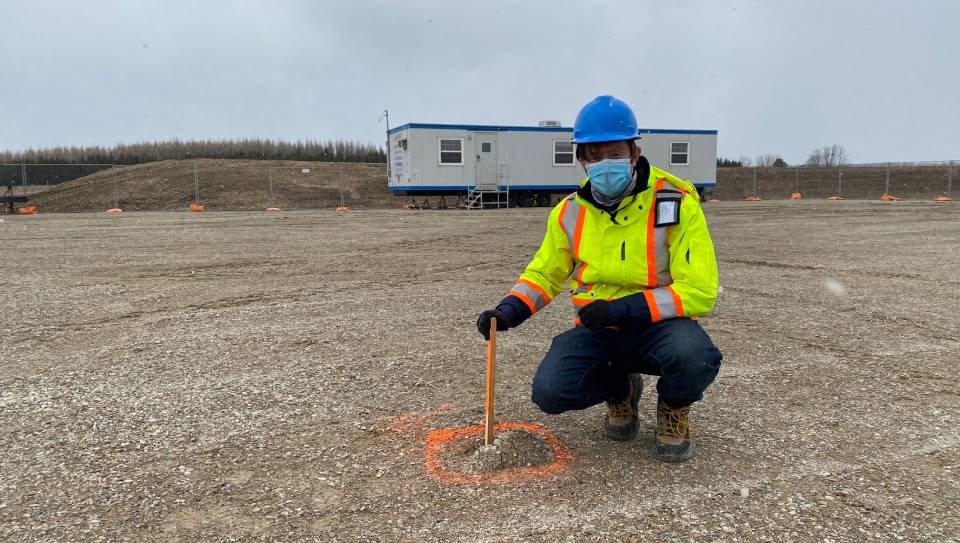IGNACE – Although there is a massive amount of anxiety surrounding the topic of how Ontario should manage its used nuclear waste, the NWMO is confident that the Revell site for the deep geological repository could be constructed as planned.
The reports are based on years of research and fieldwork. It summarizes the NWMO’s understanding of each sitting area, including geological characteristics that indicate the sites can meet the project’s requirements to contain and isolate used nuclear fuel.
Most notably the report shows that the Revell Site has the same favourable characteristic as sites that are already in the construction process in Finland and Sweden.
“The rocks of the Revell batholith are similar to those of other crystalline rocks of the Canadian Shield, and also of the Fennoscandian Shield which are the host rocks for repositories in Finland and Sweden. These rocks are capable of removing the decay heat from the fuel and withstanding the natural stresses and thermal stresses induced by a repository,” the Confidence in Safety report explains.
The report also explains that conditions are favourable for long-term containment at a depth of 500 metres. This is important because there is a low expectation of oxidizing conditions and sulphides found in the Canadian Shield.
“This is favourable for the durability of the used fuel container,” the report acknowledges.
In addition, there is a low risk of future human intrusion into the repository.
“The Revell Site is in Canadian Shield crystalline rock,” the report states. “Petroleum and coal resources are not encountered in these types of rocks. There are no expectations nor indications of mineral resource potential within the Revell batholith at this site from past explorations or site data collected to date. This reduces the risk of inadvertent future human intrusion into the repository.”
After a site is selected, additional studies will be undertaken to further inform the repository design and long-term safety case.
“Safety is our highest priority. It drives everything we do, from project design, engineering and environmental research to interweaving Indigenous Knowledge into our work and engaging with communities,” said Laurie Swami, NWMO President and CEO. “These reports are the products of years of careful study by our science and engineering teams. They mark a major achievement in the site selection process that launched more than a decade ago.”
In 2010, the NWMO launched the process for selecting a site for its deep geological repository, and 22 communities expressed interest in learning about the project and exploring their potential to host it.
In the years following two potential sites remain in the process: one in the Wabigoon Lake Ojibway Nation-Ignace area in northwestern Ontario and the other in the Saugeen Ojibway Nation-South Bruce in southern Ontario.
“The Confidence in Safety reports outline the basis for the NWMO’s confidence that a deep geological repository can be constructed at either potential site, to safely and responsibly manage Canada’s used nuclear fuel for the very long term,” said Dr. Paul Gierszewski, Director of Safety and Technical Research at the NWMO. “Our work in Canada is grounded in decades of international research and scientific consensus that deep geological repositories represent the best solution for the safe, long-term management of used nuclear fuel.”
As the report suggests, both sites are well equipped to house a deep geological repository. The sites are located in stable, seismically quiet settings, with rock formations of the necessary depth, breadth and volume to isolate the repository. Neither site has known economically exploitable resources within the rock reducing the risk of human intrusion into the repository in the future.
However, the report also acknowledges that the study of these sites is far from over. Both the Revell site and the site in South Bruce will still need a rigorous regulatory review from the federal government and licensing from the Canadian Nuclear Safety Commission.
The regulatory and licensing process is expected to take approximately 10 years to complete.
But the review and licensing process can only begin after a site is selected with a willing host community. In other words, Wabigoon Lake Ojibway Nation-Ignace area residents or the Saugeen Ojibway Nation-South Bruce area residents are the final decision-makers for the deep geological repository.
To read the full report, click on the link: Confidence in Safety reports.
